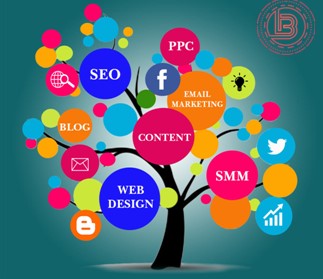In today's digital age, having a strong online presence is crucial for businesses to succeed.…

The Role of Humanized Mouse Models in Drug Discovery and Development
The global humanized mouse and rat model market size reached a value of more than USD 105.9 million in 2023. The industry is further expected to grow at a CAGR of about 10.15% in the forecast period of 2024-2032 to reach a value of over USD 189.10 million by 2032. These statistics underscore the growing importance of humanized mouse models in biomedical research and drug development. In this blog post, we will delve into the significance of humanized mouse models in drug discovery and development, exploring their crucial role in revolutionizing the pharmaceutical and healthcare industries.
I. The Need for Humanized Mouse Models
A. Limitations of Traditional Animal Models
Traditional animal models, such as mice and rats, have been invaluable in scientific research for many decades. However, they have inherent limitations when it comes to studying human diseases and drug responses. These models often fail to accurately mimic the complexities of human physiology, leading to challenges in translating preclinical findings to human clinical trials. Humanized mouse models address this issue by incorporating human genes or tissues, bridging the gap between animal models and human biology.
B. The Relevance of Humanized Models in Mimicking Human Physiology
Humanized mouse models are engineered to possess human-like immune systems, tissues, or organs. This similarity to human physiology allows researchers to investigate disease mechanisms and drug interactions in a more clinically relevant context. For example, researchers can create mice with humanized immune systems to study infectious diseases like HIV/AIDS, which primarily affect humans. These models provide insights that traditional mouse models cannot offer.
C. Examples of Successful Drug Discoveries Using Humanized Mice
To appreciate the impact of humanized mouse models, it’s essential to highlight some successful drug discoveries enabled by these models. One of the most notable examples is the development of monoclonal antibody therapies for cancer. Humanized mice played a pivotal role in testing the safety and efficacy of these groundbreaking treatments before they reached patients. The ability to predict human responses accurately in these models significantly accelerated drug development.
II. Applications of Humanized Mouse Models in Drug Discovery
A. Studying Disease Mechanisms
1. How Humanized Models Replicate Disease Conditions
Humanized mouse models can replicate various disease conditions, making them valuable tools for understanding disease mechanisms. For instance, researchers can create mice with humanized liver tissues to study liver diseases like hepatitis and non-alcoholic fatty liver disease (NAFLD). These models enable researchers to observe disease progression and test potential treatments in a controlled setting.
2. Case Studies Highlighting Disease Research
One remarkable case study involves the development of antiretroviral therapies for HIV/AIDS. By using humanized mice with reconstituted human immune systems, researchers gained crucial insights into the virus’s behavior and tested novel drug candidates. This research paved the way for the development of life-saving HIV treatments used worldwide.
B. Testing Drug Efficacy and Safety
1. Preclinical Drug Testing Using Humanized Mice
Humanized mouse models are increasingly employed in preclinical drug testing. Before a new drug candidate advances to human trials, it undergoes rigorous testing in these models. For example, in the field of oncology, humanized mice are used to assess the effectiveness of cancer drugs and identify potential side effects. This step helps researchers prioritize the most promising drug candidates and optimize treatment regimens.
2. Reducing Late-Stage Drug Failures
One of the significant challenges in drug development is the high rate of late-stage failures, which can be both costly and time-consuming. Humanized mouse models serve as a crucial bridge between initial drug discovery and clinical trials, allowing researchers to better predict how drugs will perform in humans. This leads to more informed decisions and a higher likelihood of successful clinical outcomes.
C. Predicting Human Responses
1. How Humanized Models Help Predict Human Outcomes
The ability to predict human responses to drugs and treatments is a game-changer in drug development. Humanized mouse models provide a unique advantage by allowing researchers to test drug candidates in a context that closely resembles human physiology. This predictive capability reduces the risk of adverse reactions and failures in clinical trials, ultimately benefiting patients and the pharmaceutical industry.
2. Precision Medicine and Personalized Drug Development
Precision medicine, which tailors treatments to individual patients based on their genetic makeup and disease characteristics, is a promising approach in healthcare. Humanized models contribute to the advancement of precision medicine by enabling researchers to assess how a patient’s specific genetic profile might influence drug responses. This personalized approach holds the potential to revolutionize treatment outcomes and reduce adverse events.
III. Challenges and Considerations
A. Ethical Concerns and Regulations
1. Ethical Use of Humanized Models
The ethical use of humanized mouse models is a topic of significant concern. Researchers must adhere to strict ethical guidelines when working with these models, ensuring that the creation and use of humanized animals are justified and conducted with respect for animal welfare. Ethical considerations also extend to the source of human cells or tissues used to create these models.
2. Regulatory Guidelines for Research
Regulatory bodies play a crucial role in overseeing research involving humanized models. Guidelines exist to ensure the humane treatment of animals, the ethical sourcing of human material, and the responsible conduct of research. Researchers and institutions must navigate these regulations to conduct their studies within legal and ethical boundaries.
B. Model Development and Maintenance
1. Challenges in Creating and Maintaining Humanized Models
Creating and maintaining humanized mouse models can be technically challenging. Researchers need specialized knowledge and resources to genetically engineer these models or transplant human tissues successfully. Moreover, the maintenance of these models requires careful monitoring and specific environmental conditions to ensure their continued health and relevance.
2. Cost Considerations
The development and maintenance of humanized mouse models can be cost-intensive. Researchers must allocate resources for genetic engineering, housing, and ongoing care. However, the potential benefits in terms of drug discovery and development often outweigh these costs, making humanized models a worthwhile investment for many research institutions.
C. Species-Specific Limitations
1. Understanding the Limitations of Mice in Representing All Human Conditions
Despite their significant contributions to biomedical research, mice and rats are not perfect models for every human condition. Researchers must acknowledge the species-specific limitations of these models. Some diseases or drug responses may not be accurately replicated in humanized mice, and researchers must consider alternative approaches when necessary.
IV. Success Stories
A. Notable Drug Discoveries Facilitated by Humanized Mouse Models
- HIV/AIDS Treatment Advancements: Humanized mouse models played a pivotal role in advancing the treatment of HIV/AIDS. These models allowed researchers to test antiretroviral drugs, assess their safety and efficacy, and gain insights into the virus’s behavior. This research led to the development of highly effective HIV treatments that have saved countless lives worldwide.
- Immune Checkpoint Inhibitors in Cancer Therapy: The field of cancer immunotherapy has witnessed remarkable progress thanks to humanized mouse models. Researchers used these models to evaluate immune checkpoint inhibitors, a revolutionary class of cancer drugs. Humanized mice helped identify promising candidates and optimize treatment regimens, leading to significant improvements in cancer patient outcomes.
B. Current Research and Ongoing Projects
- Infectious Disease Research: Humanized mouse models continue to drive progress in infectious disease research. Researchers are using these models to study emerging pathogens, such as the Zika virus and SARS-CoV-2 (the virus responsible for COVID-19). These studies are critical for understanding disease transmission and developing effective vaccines and treatments.
- Neurodegenerative Disease Studies: Humanized models are also making strides in neurodegenerative disease research, including Alzheimer’s and Parkinson’s diseases. By introducing human neuronal cells into mouse brains, researchers can investigate disease mechanisms and test potential therapies. These models offer hope for finding treatments for devastating neurological disorders.
V. Future Prospects
A. Emerging Technologies and Trends
1. Advancements in Genetic Engineering
The field of genetic engineering is rapidly evolving, opening up new possibilities for humanized mouse models. Advanced techniques, such as CRISPR-Cas9, enable researchers to create more precise and sophisticated models. These innovations will enhance the models’ utility in drug discovery and development.
2. Organoid-Based Models
Organoids, three-dimensional cultures of human tissues, are gaining prominence in biomedical research. Combining organoids with humanized mouse models can provide a more comprehensive understanding of disease processes. This integration offers exciting prospects for studying complex diseases and developing targeted therapies.
Read More Articles
B. The Role of Artificial Intelligence and Big Data in Drug Discovery
Artificial intelligence (AI) and big data analytics are becoming indispensable tools in drug discovery. Machine learning algorithms can analyze vast datasets generated from humanized mouse experiments, helping researchers identify patterns and predict drug responses more accurately. This synergy between AI and humanized models has the potential to accelerate drug development further.
C. Potential Impact on Healthcare and Pharmaceutical Industries
The continued advancement of humanized mouse models holds the promise of transforming healthcare and the pharmaceutical industry. More precise and efficient drug development processes will lead to faster access to innovative treatments for patients. Moreover, personalized medicine approaches will become increasingly common, improving patient outcomes and reducing healthcare costs.




This Post Has 0 Comments